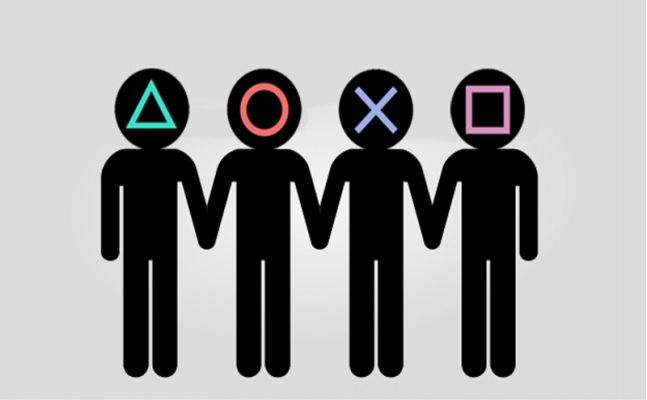Resolved: 8 tips for a healthier lifestyle in 2017

Difficult but impactful health related resolutions can lead to improved lifestyle. Avoiding sugar drinks and switching to all fruit juices cuts the unneeded calories. Physical activities like walking and cycling can make your heart healthier and lower the risk of diabetes. Also reduce drinking, quit the intake of tobacco and improve your mental health by taking better care of yourself.
After weeks of calorie-laden holiday festivities, it is never easy to pick up your head from the pillow and begin anew. And yet the single digits on the calendar offer a lovely opportunity to do precisely that. “This is the perfect time of year for all of us to reflect on our personal health goals and resolve to make healthy lifestyle choices in the coming year,” AMA President Andrew W. Gurman, MD, said in a recent statement. Some contend that New Year’s resolutions may be a bad idea, dooming you to failure, if they are not accompanied by self-understanding and a social support system to help you live up to them. Nevertheless, it is important, as Dr. Gurman said, for people to understand “where they can make the most impactful, long-lasting improvements in their health.” The doing is no doubt the hardest part, but here are eight ideas on health-related resolutions for you to target in 2017. Avoid sugary drinks. Nothing hits the sweet spot like anhydrous dextrose. That is just one of a long list of sweeteners frequently added to drinks that make it easy to add unneeded calories to your diet. One 20-ounce sports drink has 122 calories of added sugars, while a 12-ounce can of regular soda has 126 calories of added sugars. Instead, try drinking water, coffee, unsweetened tea or other calorie-free drinks. When you do drink beverages with sugar, go for milk or all-fruit juices that boost your dairy or fruit intake. Know your risk for type 2 diabetes. One in three Americans has prediabetes, yet only one in 10 knows it. Prediabetes is a precursor to type 2 diabetes, with as many as 30 percent of patients with prediabetes progressing to diabetes within five years. Yet diabetes is not inevitable. Eating more healthfully, exercising regularly and losing between 5 and 7 percent of one’s body weight can prevent diabetes. Take a self-screening test now to determine your risk, talk to your physician and find out about widely available, evidence-based diabetes prevention programs that can help. Move more. Every healthy adult between 18 and 65 years old needs at least 30 minutes of moderate-intensity aerobic physical activity five days a week. These are activities in which you move your large muscles in a rhythmic manner for a sustained period. They include walking briskly, bicycling slowly or gardening. This kind of movement makes your heart beat more quickly and overtime it makes your cardiovascular disease system healthier. Another healthy alternative is to get at least 20 minutes of vigorous-intensity aerobic physical activity three days a week. This category includes jogging, running, swimming laps, singles’ tennis, dancing, cycling 10 mph or faster, jumping rope or uphill hiking. Avoid processed food and added sodium. This is a category of unhealthy choices hidden right under our noses, in the form of many packaged foods such as meat, poultry, seafood, pasta, dressings, sauces, soups or gravies. You may, of course, consult the nutrition label to seek out lower-sodium options. A less confusing route is probably to opt for fresh, frozen or canned foods without any added sauces or seasonings. By seasoning your own food when you cook at home, you control how much sodium is used. And try out other herbs and spices to get the kick you want instead of shaking on more salt. If you drink alcohol, do so in moderation. If you are a woman, that means up to one drink a day, and two drinks daily for men, as defined by the U.S. Dietary Guidelines for Americans—which the AMA supports. And only adults of legal drinking age ought to drink alcohol. Keep in mind that not every drink equals “one drink,” depending on the alcohol content. Talk with your doctor about tobacco use and quit. Your physician will help you drop the tobacco habit for good with evidence-based, Food and Drug Administration-approved cessation aids. Electronic cigarettes do not fall into that category. A recent U.S. surgeon general report notes that evidence for e-cigarettes as quit-smoking devices is lacking, adding that the “health impacts of frequent exposure to the toxicants in e-cigarette aerosol are not well understood, though several are known carcinogens.” Make your home and car smoke-free. Declaring this the policy of your abode and automobile can help eliminate your exposure—and the exposure of loved ones—to secondhand smoke. Giving friends, family and colleagues who are smokers one less place to light up may also encourage them to take the necessary step of quitting. Manage stress. The good news on this front is that a good diet and daily exercise, as noted above, are key ingredients to maintaining and improving your mental health. So you are killing two birds with one stone by eating better and moving more. Another essential element on this front is to realize the power of saying “No.” It is never easy to do this, but taking better care of yourself will make you a better colleague and friend over the long run. Lastly, do not see it as a sign of weakness to ask for help from a friend or mental health professional when you need it. We are here for each other.

If You Like This Story, Support NYOOOZ
Your support to NYOOOZ will help us to continue create and publish news for and from smaller cities, which also need equal voice as much as citizens living in bigger cities have through mainstream media organizations.


.png)
1.png)
.png)
.png)





